Introduction
On May 12, 2008, at 14.28 (local time), an earthquake occurred in Sichuan province. The epicenter with a magnitude of 7.8 was located 90 kilometers from the provincial administrative center of the city of Chengdu, China. Subterranean tremors were felt in Beijing. This disaster made a moderate impact on the country’s economy, yet affected several industries located in the devastated areas.
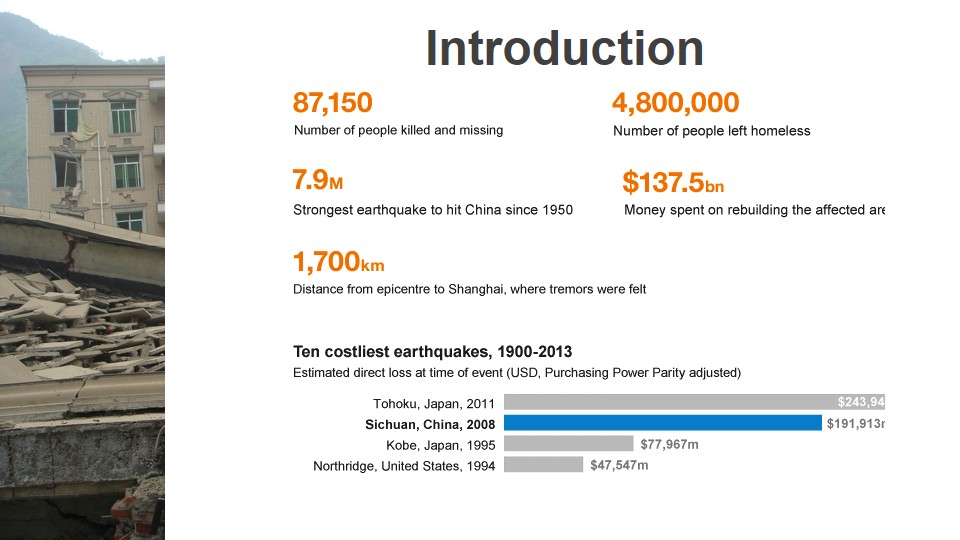
Economic Impact: GDP
The restoration of the economy of China has thrown various challenges, primarily because the area of the disaster was rather huge. The damage from the most powerful earthquake in China within the last 30 years has exceeded a trillion yuan (almost $ 150 billion). As a result of the impact of the underground elements, more than ten million people were left homeless. The construction of temporary housing for such a large number of people took about 2.5 years, while all of them were settled in temporary homes by the end of 2010. In particular, 69,227 people were killed, 17,923 were missing, and over 370,000 were injured (Wei et al. 302). This was the most devastating earthquake since the formation of the People’s Republic of China (PRC).
As noted by the National Bureau of Statistics, Sichuan’s Gross Domestic Product (GDP) accounted for solely 4.2 percent of the national total in 2008. The total GDP of China was more than $ 24,600 billion in that period that made the country the fourth in the list of the global economy (Trading Economics). This means that the impact of the Wenchuan earthquake on China’s overall economy could not be significant. It should be emphasized that such a strong economy was able to help the devastated areas in recovering. In general, the mentioned disaster did not affect significantly the growth of the country’s GDP.
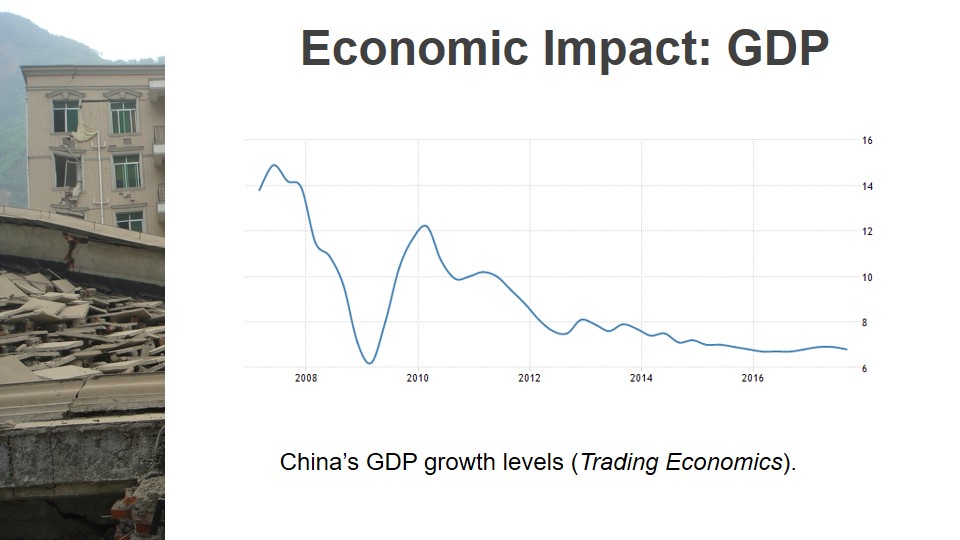
Economic Impact: Inflation
As for the inflationary pressure, 2008 was marked by the increase in inflation that exceeded the expected rates. Namely, as noted by Trading Economics the estimated 4,5 percent turned out to be six percent, but the role of the Wenchuan earthquake in this increase is evident yet not great (see fig. 2). Food and drinking water are two products that led to inflation in the devastated areas.
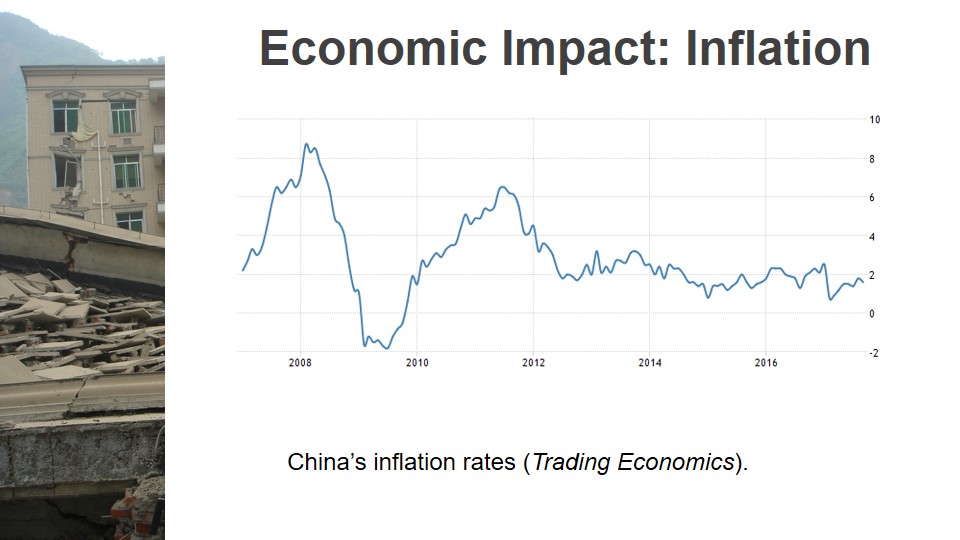
Industries Affected
- Constriction;
- Insurance;
- Hydro power generation;
- Transportation;
- Tourism;
- Manufacturing;
- Mining;
- Agriculture.
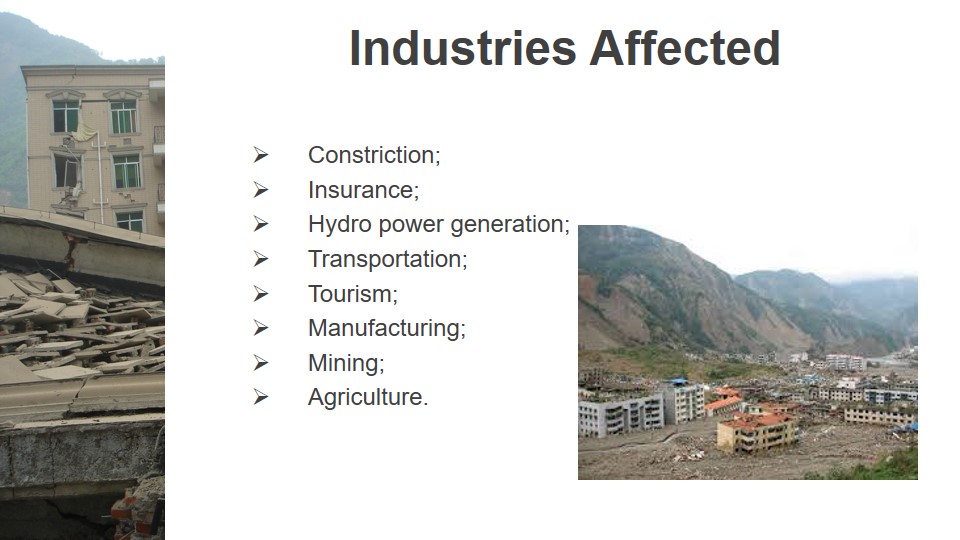
Products
Among the key products, there were construction materials, road supplies, drinking water and food, and a dire need for temporary shelters.
Indirect economic damage from the Wenchuan earthquake included the following components: change in the volume and structure of output of industry, performance indicators, and development of the production of interchangeable types of products for the needs of the emergency area (Wu et al. 169).
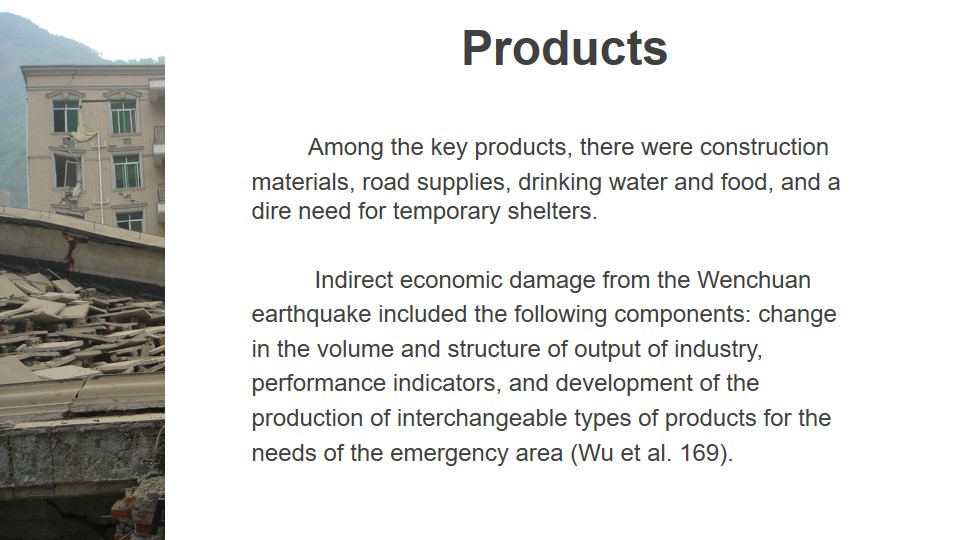
Construction
- Construction of new houses – 3.7 million tons of metal structures and 370 million tons of cement;
- 20,000 buildings have been built initially, and another 175,000 temporary houses have been laid (Zhong et al. 8).
The key aim of recovering was the reconstruction of houses. In particular, iron, steel, and cement were the most demanded construction products.
Since the latter cannot be transported over long distances due to its specifics, both demand and price for cement raised.
At the same time, certain results have been achieved in the restoration work. As of August 12, work resumed 93 percent of the enterprises of the earthquake-hit Sichuan province (Zhong et al. 8). According to the disaster management analysis based on the mentioned earthquake, for houses without shelter, they were built at an accelerated pace.
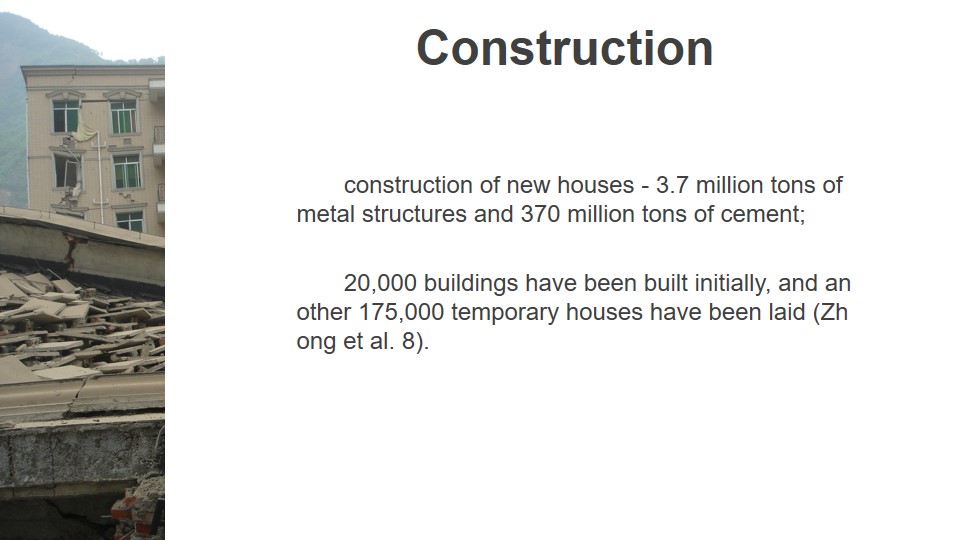
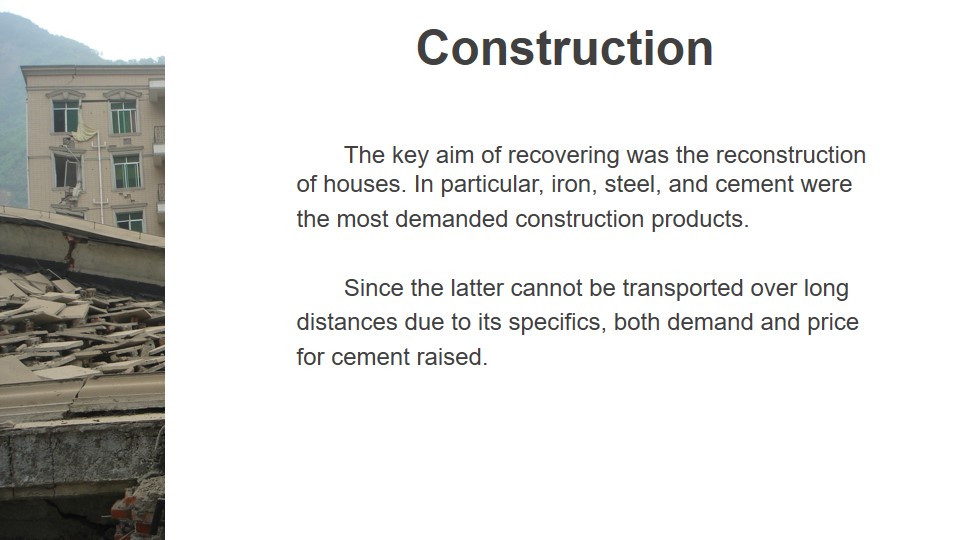
Insurance and Hydro Power
- Insurance sector:
- the most critical losses;
- raised people’s awareness of the need to insure their lives and property;
- Improved revenues.
- Hydro Power:
- reduced water and power supply in a short-term aspect;
- damaged roads limited hydro power transition.
Insurance sector incurred the most critical losses as insurers had to pay compensations to plenty of organizations and individuals. At the same time, the Wenchuan earthquake raised people’s awareness of the need to insure their lives and property, thus making more requests for insuring companies in the next years and increasing their revenue (Zhong et al. 8). Hydro power generation was another strong point of the given area. Its damage significantly reduced water and power supply in a short-term point. Accordingly, communication and transportation were also hilted.
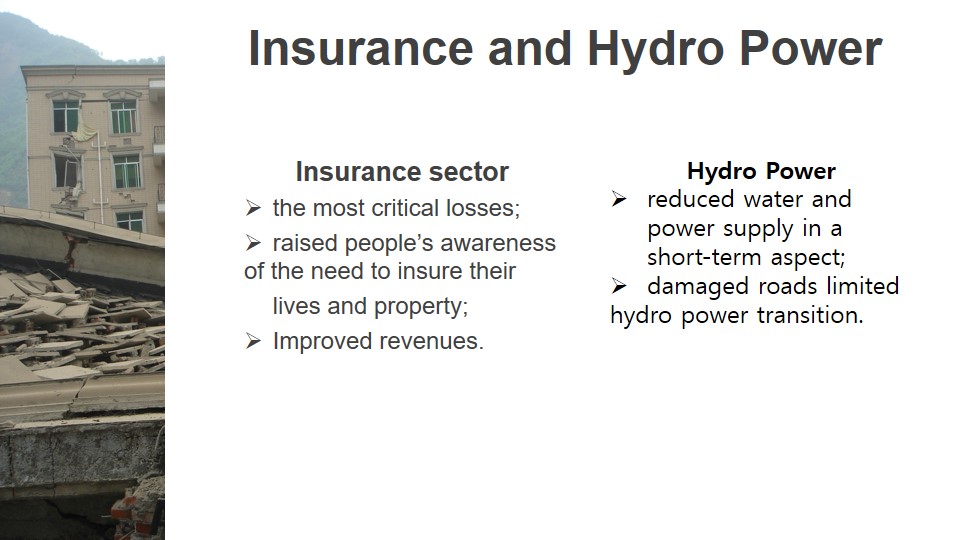
Transportation: Demand and Supply
The whole extent of fractured roads surpassed 17 thousand km, and the economic damage from this was estimated at 16.2 billion yuan (International Energy Agency). Both demand and supply for transportation fuels grew.
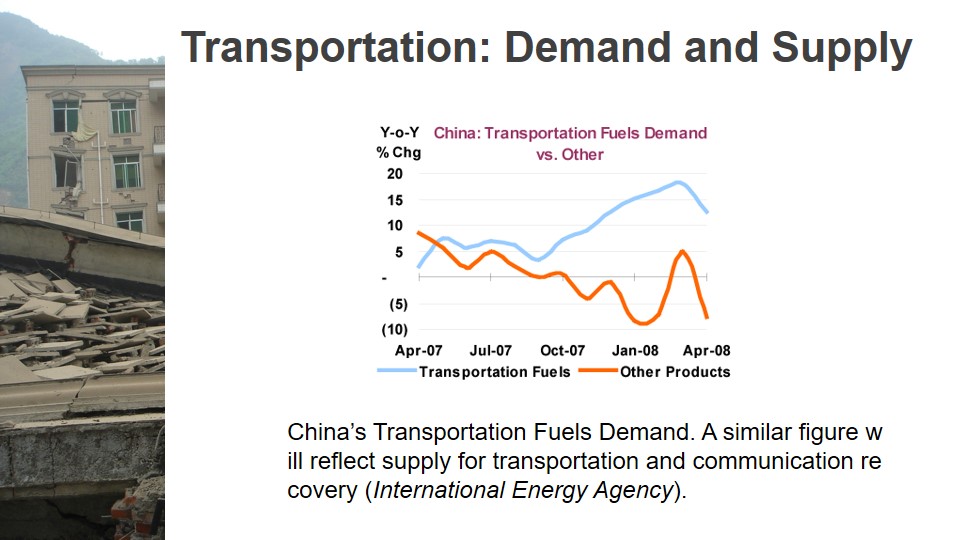
Tourism
This industry was almost destroyed by the tremors that cannot be overestimated in terms of the province’s GDP, where eight percent was composed of touristic services.
After the disaster, only extreme tourists visited the province of Sichuan.
More than 16 thousand enterprises suffered from the earthquake, as a result of which 372 thousand townspeople lost their jobs, as it is noted in their recent research study by Xu and Lu (218). In addition, 1.5 million peasants remained without means of production. Even though the manufacturing and production sectors of Sichuan province and Chongqing municipality composed only one percent of the country’s total export, some enterprises were relocated. It is crucial to emphasize that plenty of people were unable to find a new job due to the shortage of supply. In terms of the quake-hit regions, many companies were unable to operate further and employ people. This also affected the province’s economy, yet did not make a great impact on those of the country. The review of the related literature indicates that the policy of outward investment was preserved in spite of the quake, and foreign investment remained unchanged. Such industries as engineering, iron and steel, pharmaceuticals, and machinery grew due to increased demand and supply (Xu and Lu 215). The key aim of recovering was the reconstruction of houses. In particular, iron, steel, and cement were the most demanded construction products.
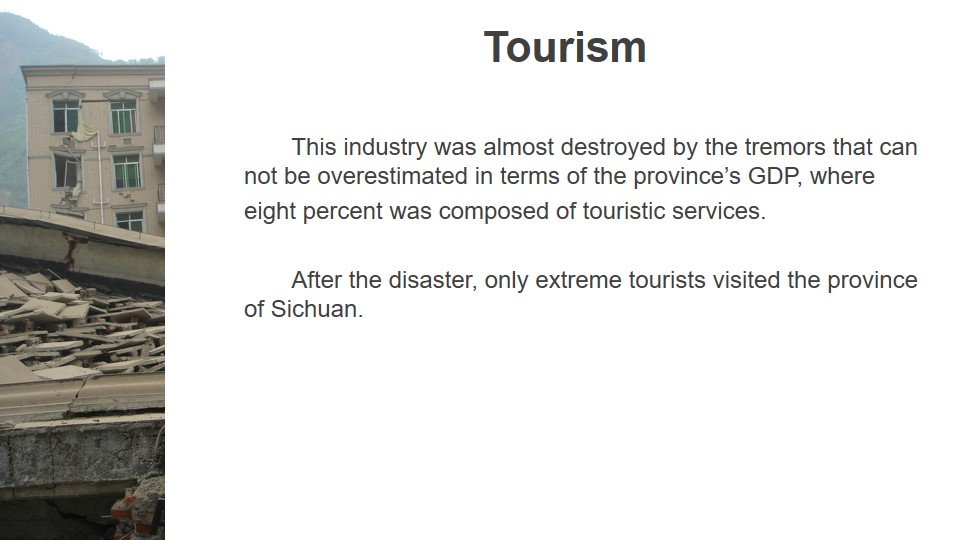
China’s Response
- The General Plan for the recovery;
- Proposal for low-carbon economy;
- Reconstruction;
- China Banking Regulatory Commission and loans written off;
- The United Nations (UN) assistance;
- Day of Disaster Management celebration.
In response to the given disaster, China introduced a low-carbon economy. Based on greenhouse gases and the adaptation of the energy sector required a long time, yet the start was given since the Wenchuan earthquake (Andrews-Speed 5). It was stated that the transition to a low-carbon economy would allow being less dependent from natural disasters and recovering from them more rapidly. According to the General Plan for the recovery after the earthquake in Wenchuan, China’s central government has allocated a total of 100 million yuan for earthquake relief and financing projects for the restoration of severely affected areas in the provinces of Sichuan, Gansu, and Shaanxi (Zhong et al. 7). By the end of 2010, the paramount living conditions and level of socio-economic development in the affected areas reached or even exceeded the level of the period before the earthquake. Two years later, the reconstruction tasks were basically completed (Guan and Barker 251). The United Nations (UN) provided urgent humanitarian assistance estimated of $ eight million as assistance for the victims of the earthquake in Sichuan areas.
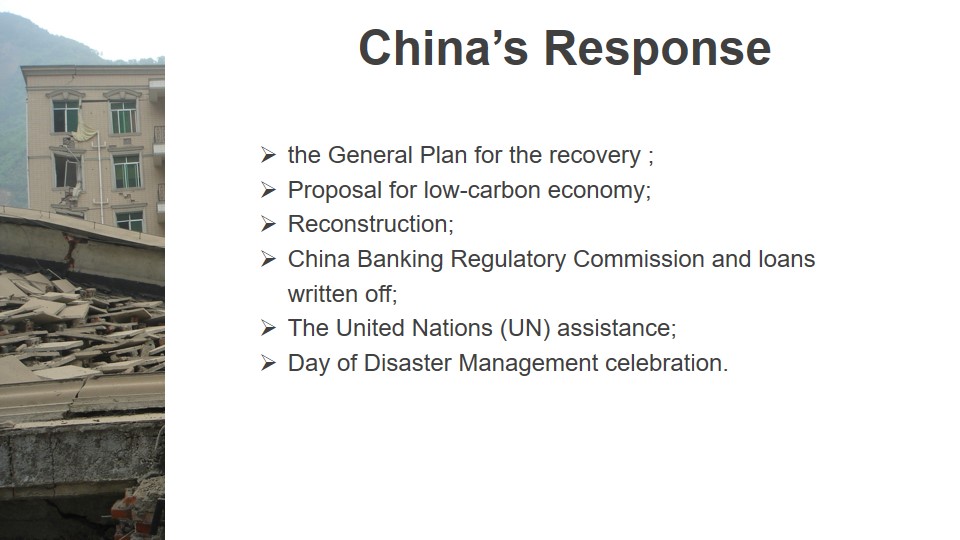
Conclusion
Wenchuan earthquake had a limited impact on China’s overall economy.
Considering that the devastated areas composed insignificant part of the country’s GDP, no critical harm or risk may be mentioned.
Nevertheless, construction materials, transportation, energy, and drinking water were among the most demand products.
Due to strong economy as well as UN assistance and foreign investment, China’s Sichuan province recovered in a few years.
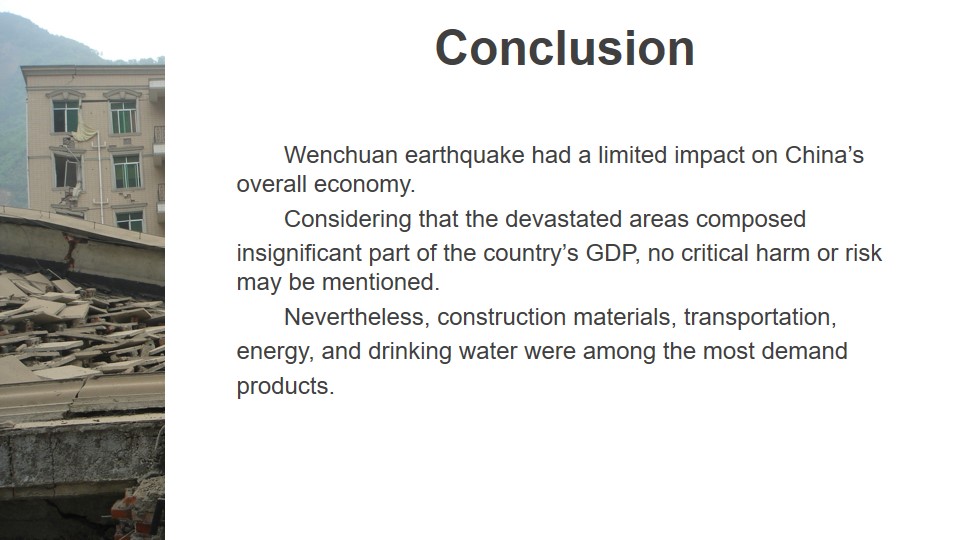
Works Cited
Andrews-Speed, Philip. “China’s Long Road to a Low-Carbon Economy: An Institutional Analysis.” Transatlantic Academy, 2012. Web.
Guan, Dabo, and Terry Barker. “Low-carbon Development in the Least Developed Region: A Case Study of Guangyuan, Sichuan Province, Southwest China.” NaturalHazards, vol. 62, no. 2, 2012, pp. 243-254.
International Energy Agency. International Energy Agency, 2012. Web.
Trading Economics. Trading Economics, 2017. Web.
Wei, Yi-Ming et al. “Impacts of Natural Disasters and Disaster Risk Management in China: The Case of China’s Experience in the Wenchuan Earthquake.” ResilienceandRecoveryinAsianDisasters. Springer Japan, 2015. pp. 287-307.
Wu, Jidong, et al. “Regional Indirect Economic Impact Evaluation of the 2008 Wenchuan Earthquake.” EnvironmentalEarthSciences, vol, 65, no. 1, 2012, pp. 161-172.
Xu, Jiuping, and Yi Lu. “Meta-Synthesis Pattern of Post-Disaster Recovery and Reconstruction: Based on Actual Investigation on 2008 Wenchuan Earthquake.” NaturalHazards, vol. 60, no. 2, 2012, pp. 199-222.
Zhong, Shuang, et al. “Progress and Challenges of Disaster Health Management in China: A Scoping Review.” GlobalHealthAction, vol. 7, no.1, 2014, pp. 1-9.